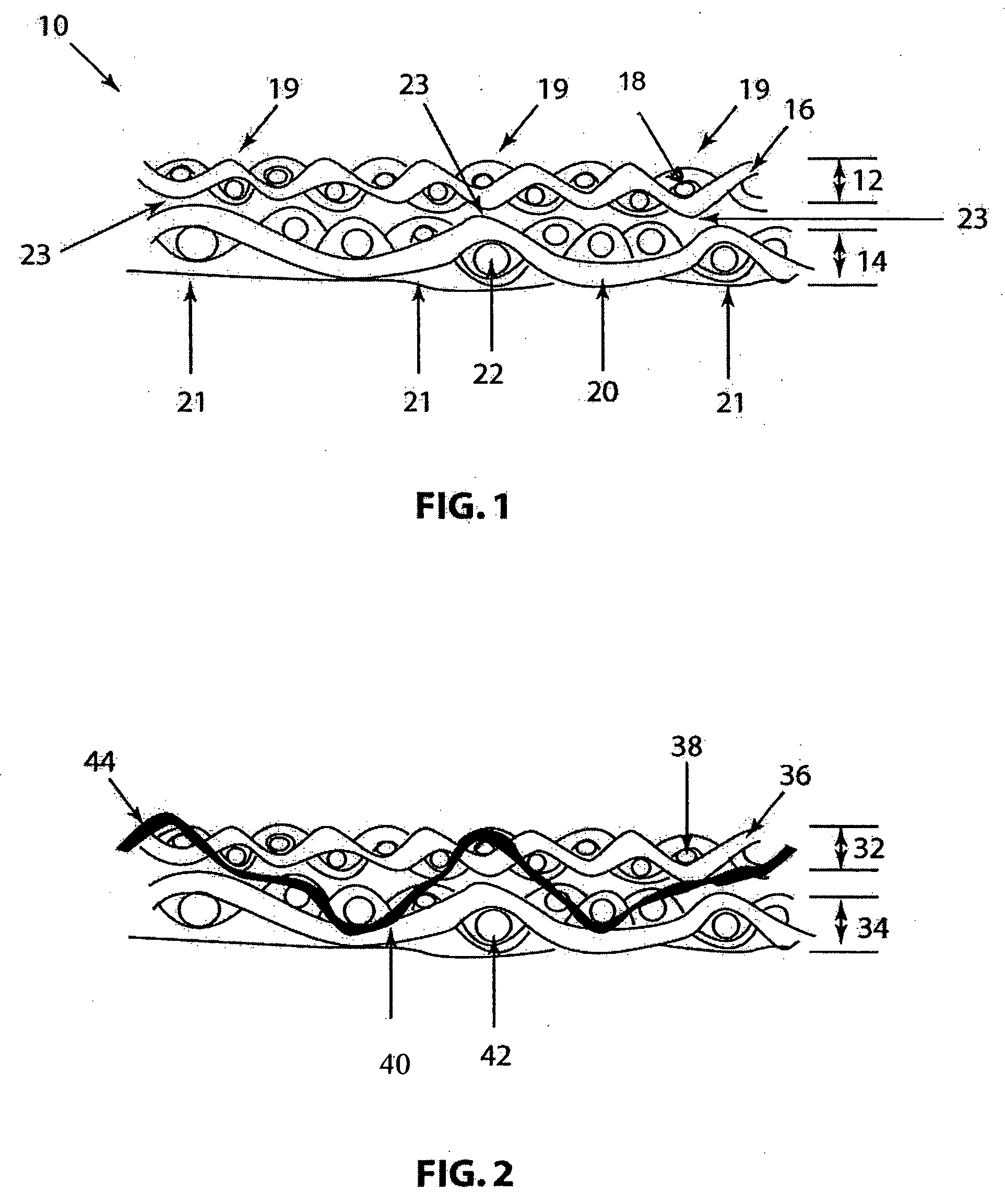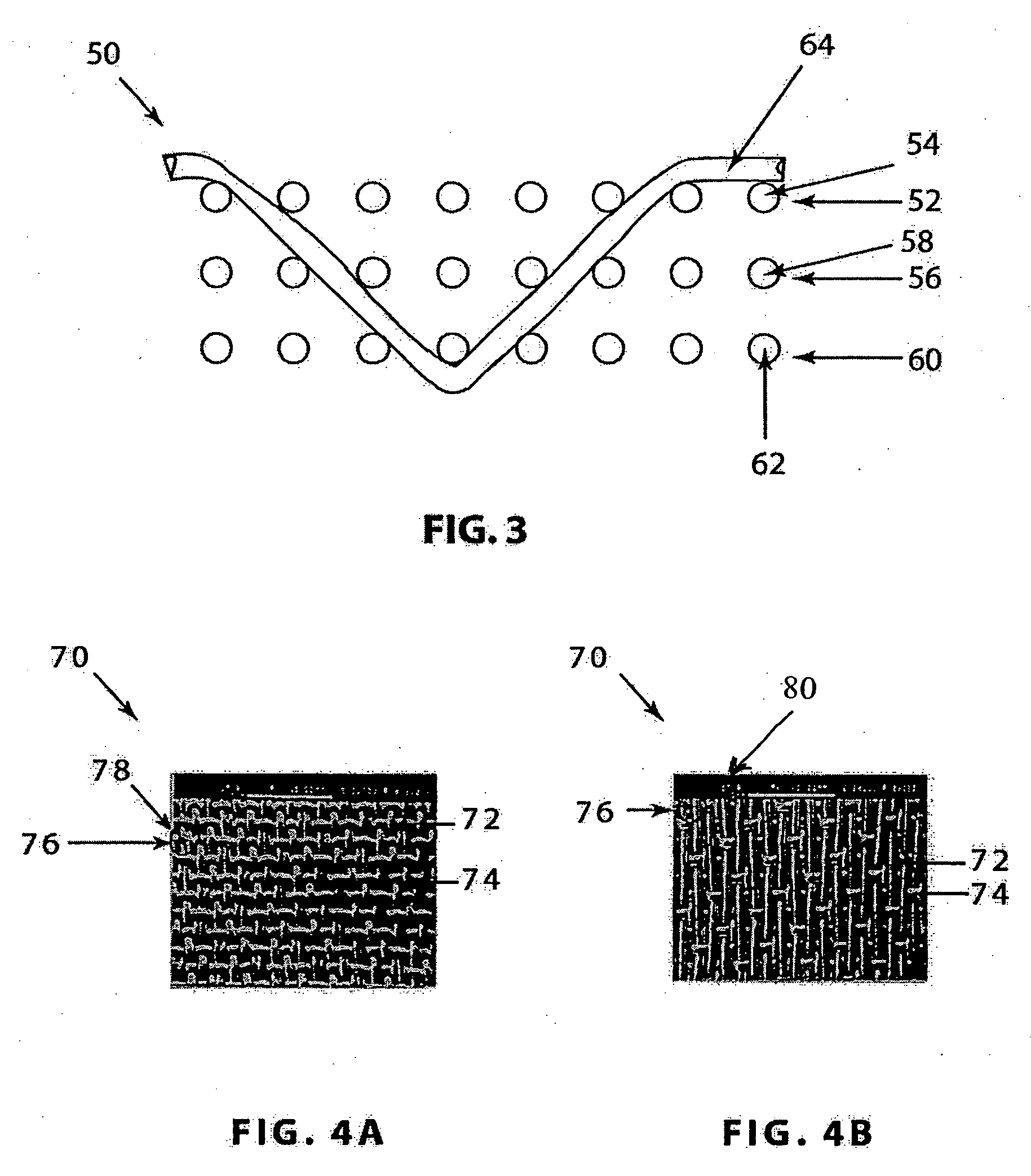Forming fabrics
- Summary
- Abstract
- Description
- Claims
- Application Information
AI Technical Summary
Benefits of technology
Problems solved by technology
Method used
Image
Examples
Embodiment Construction
[0036] The present invention relates to a fabric which may be usable in the forming section of a papermaking machine. An embodiment of the present invention will be described in the context of a laminated forming fabric. However, it should be noted that the invention is not limited thereto but may be applicable to other fabrics such as forming fabrics having a single layer, single layer support shute, double layer, double layer support shute, triple stacked shute, triple layer with paired weft or warp binders, warp bound triple layer, shute bound triple layer or combined warp / shute bound triple layer.
[0037] Such a laminated fabric may include a first (upper) layer and a second (lower) layer in which each of the first and second layers has a system or plurality of interwoven machine-direction (MD) yarns and cross-machine direction (CD) yarns. The first layer may be a paper side or faceside layer upon which the cellulosic paper / fiber slurry is deposited during the papermaking process...
PUM
| Property | Measurement | Unit |
|---|---|---|
| Temperature | aaaaa | aaaaa |
| Temperature | aaaaa | aaaaa |
| Time | aaaaa | aaaaa |
Abstract
Description
Claims
Application Information
 Login to View More
Login to View More - Generate Ideas
- Intellectual Property
- Life Sciences
- Materials
- Tech Scout
- Unparalleled Data Quality
- Higher Quality Content
- 60% Fewer Hallucinations
Browse by: Latest US Patents, China's latest patents, Technical Efficacy Thesaurus, Application Domain, Technology Topic, Popular Technical Reports.
© 2025 PatSnap. All rights reserved.Legal|Privacy policy|Modern Slavery Act Transparency Statement|Sitemap|About US| Contact US: help@patsnap.com



